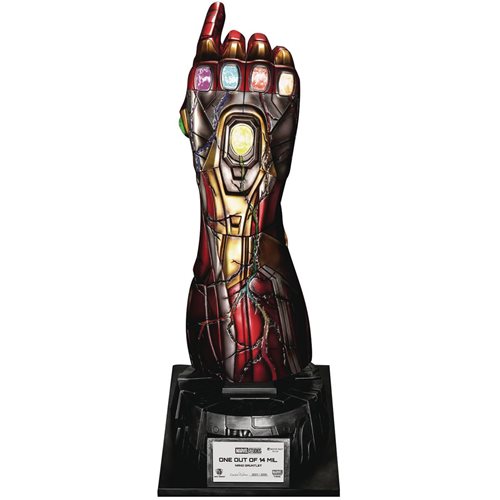Interview with John Rupkalvis, CEO of StereoScope International
 I had the opportunity to interview John Rupkalvis yesterday - he is currently CEO of StereoScope International, which he founded in 1972, and Vice President of StereoMed, Inc., which he co-founded in 1978. John has an extensive technical and artistic background in the fields of stereographic science and engineering, cinematographic, video, and computer technologies. I asked some pointed questions representing what the public seems to want to know about the 3D industry today - which led to an interesting comment by John about a technology that StereoScope has that will help increase the 3D quality even further than today's standards.
I had the opportunity to interview John Rupkalvis yesterday - he is currently CEO of StereoScope International, which he founded in 1972, and Vice President of StereoMed, Inc., which he co-founded in 1978. John has an extensive technical and artistic background in the fields of stereographic science and engineering, cinematographic, video, and computer technologies. I asked some pointed questions representing what the public seems to want to know about the 3D industry today - which led to an interesting comment by John about a technology that StereoScope has that will help increase the 3D quality even further than today's standards.
MarketSaw: What can people expect (direction of the 3D industry)?
JR: "Controversy. As usual."
Plenty of controversy exposed right here on MarketSaw - check out this post.
MarketSaw: What format(s) are going to eventually win dominance?
JR: "This has been, and continues to be debated, such as in the SMPTE DC28.40 committee, of which I am a member. Everything from servers, to packages, to luminance, to metadata, etc., etc."
Remember that most 3D movies will be digital in today's world and so that lends itself to computerized management, hence servers and therefore flexibility. Standards are needed to deliver consistent quality and value to the end consumer.
MarketSaw: Will people see an integration of movies with gaming?
JR: "This has happened, and likely will continue."
MarketSaw sees a future where there are publicly generated backgrounds and objects made for within movies - just like developers add levels to games that allow modifications. The kicker is most will probably do the work for free for a simple credit at the end of the film - just like gamer levels. Spreading work among hundreds of developers working for free should speed up special effects as well as make them far more affordable. Taking this a step further - why not bring gaming right into an interactive 3D movie? Theater chairs with gamepads? Hmmm.
MarketSaw: Will we ever get rid of the glasses?
JR: "Stereoscopic systems that do not use glasses, such as barrier grid and lenticular, are known as autostereoscopic. Right now, glasses-based systems are much more cost-effective, and capable of much higher quality results. The Stereocinema in Moscow used an autostereoscopic display for many years, but now has converted to a polarized-glasses system. Glasses are often associated with style and enjoyable activities, such as people wearing sunglasses for driving, outdoor sports, or going to the beach."
The glasses are the only real downside to audiences around the world, but it is really a small downside. The ideal solution of course is to not have to wear them, but until such time as we don't have to - lightweight, no headache glasses are fine with me.
MarketSaw: Who are the players in the industry?
JR: "Most digital cinema releases have been CG (Computer Graphics) by such companies as Disney/Pixar and, more recently, Dreamworks. Live-action productions are being pursued by several, including Steve Schklair's 3ality (not to be confused with 3ality of Israel, a different company), and, of course Cameron/Pace."
I would throw in the smaller players who will fill in the voids left by the bigger studios when their blockbusters have run their course in the 3D theaters, like Adirondack International Pictures and StereoVision Entertainment.
MarketSaw: How do these players differ from one another regarding tech?
JR: "Not that much. Most systems in current use either use beamsplitter-type rigs, or convergent systems with a wider-than-normal stereo base.
Beamsplitter systems are very inefficient, losing nearly 2/3 of the available light. This can be a real problem in stereoscopic systems where depth of field is usually very important. Fuzzy foregrounds and backgrounds result in eyestrain. Convergent (toe-in) systems result in opposed keystone distortion, aggravated by wider-than-normal stereo bases, also resulting in eyestrain.
This is important, as people are not going to go to see 3-D movies if they get headaches from them."
Beamsplitter systems are very inefficient, losing nearly 2/3 of the available light. This can be a real problem in stereoscopic systems where depth of field is usually very important. Fuzzy foregrounds and backgrounds result in eyestrain. Convergent (toe-in) systems result in opposed keystone distortion, aggravated by wider-than-normal stereo bases, also resulting in eyestrain.
This is important, as people are not going to go to see 3-D movies if they get headaches from them."
Some complicated systems at work here obviously. The key point here is that these guys know what they are doing and there will be no more of the headache producing blue and red cardboard glasses anymore! :-) I will have more posts later regarding 3D technology to bring folks up to speed!
MarketSaw: Are there developments on the horizon that the mainstream industry has not even looked at yet?
JR: "Yes. The StereoScope lateral-displacement system does not toe-in, yet offers the choice of lateral registration anywhere in the scene. There are no light-losses with this system. There is no eyestrain induced by this system."
Now this sounds very cool. One of the problems that face any 3D production solution is that you are introducing obstacles into the path of light from the scene being shot. Mirrors, lenses and the splitting of light beams into two paths cause light to scatter. Using a dual camera system helps a great deal as does John's solution that he mentions above. The newer digital camera systems help a great deal as they are more compact allowing them to be placed together in a dual arrangement to mimic the human eye.
Look for more 3D industry interviews coming up.


